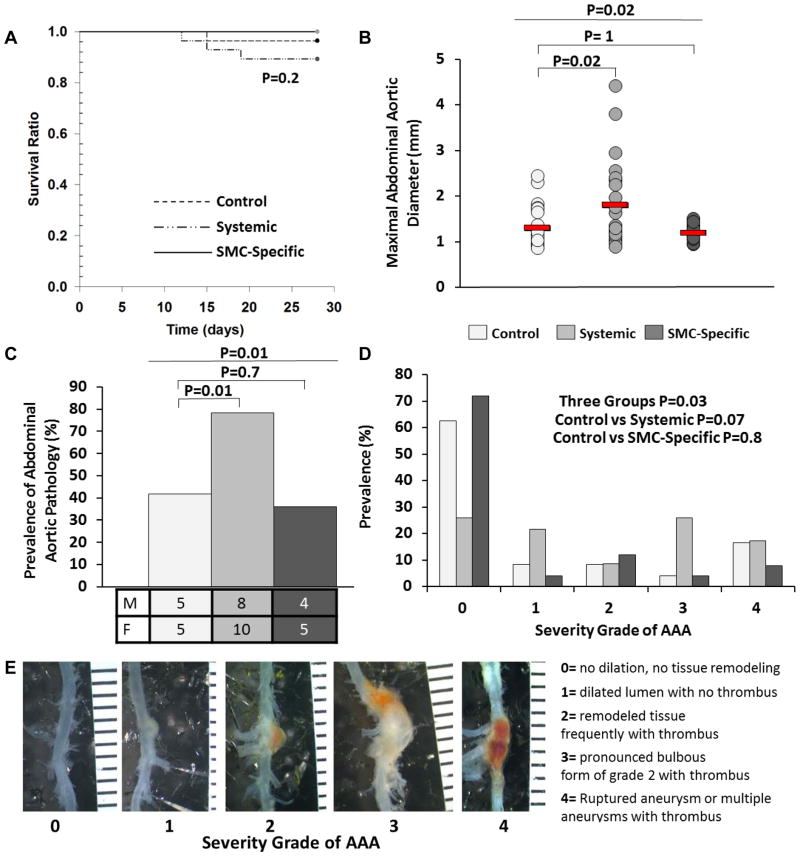Figure 2.
Systemic TGF-β signaling blockade—not SMC-specific loss of TGF-β signaling—exacerbates angiotensin II-induced gross abdominal aortic pathology. (A) Survival of mice in 3 experimental groups: control mice (no TGF-β inhibition); mice with systemic inhibition of TGF-β activity; and mice with SMC-specific loss of TGF-β signaling. (B–D) After 28 days of angiotensin II infusion, aortas (n=20–25 per group) were removed from surviving mice, photographed, and examined. (B) Maximal abdominal aortic diameters (adventitia to opposite side of adventitia), measured on images of explanted aortas. Red lines indicate group means; data points are individual mice. (C) Prevalence of abdominal aortic pathology and number of mice affected (shown by sex). (D) Severity of abdominal aortic pathology. (E) Scale for grading abdominal aortic pathology, with examples. (A) P value is from log-rank test. (B) P values are from Kruskal-Wallis one-way ANOVA (overall P value comparing the 3 groups is above), with Dunn’s correction for the pair-wise comparisons. (C,D) P values are from chi-square tests. (E) Ruler is in mm.

